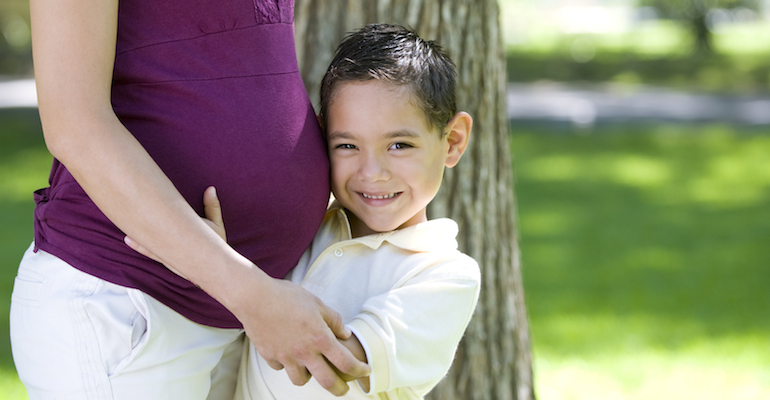Most days, my six-year-old son, Mateo, takes the bus to his suburban California kindergarten, but sometimes we drive, so we can read together in the classroom before school begins. I’ll chat with the other mothers on the playground as we watch our kids jump and run, their bodies radiating energy and happiness.
In a sea of mostly blond heads and peach arms and legs, Mateo’s black hair and light brown Latino skin stand out. I’m white, and so is my husband, but in our home, the contrast in color doesn’t seem so pronounced. It’s out here in the world, at school, even in diverse California, that Mateo and his sister say they often feel different.
On a recent morning, the excitement among the children was especially high. The teacher’s oldest daughter was pregnant, due to deliver any minute. I knew this because all week Mateo had been telling me, “Mrs. Spindler is about to become a grandma!” Our conversations on the subject provided me the opportunity to review the details of his family tree: He was born in another mommy’s tummy, in Guatemala, and my husband and I adopted him when he was six months old. And, according to the social worker’s report we received with his adoption file, Mateo’s birth mother lives with his biological grandma in a town three hours east of Guatemala City. But even that information is suspect. A few months ago, I hired a Guatemalan searcher to find Mateo’s birth mom. The lady who answered the door when the searcher knocked said no one lived there who had that name.
My own family tree, and that of Mrs. Spindler and her daughter, seems simple by comparison. As Mateo and his pals filed into the classroom, Mrs. Spindler filled us in on the latest developments in her daughter’s seemingly endless labor. Suddenly, her cell phone rang. “Oh, oh, oh!” Mrs. Spindler turned in a circle as she flipped open her phone. “It might be news!”
Another false alarm.
I settled into a small plastic chair. Mateo walked over to his cubby to pull out his book box, and then he did something he had not done in a long time. He crawled into my lap and snuggled into me like an infant. Never one to suck his fingers, he stuck his right thumb into his mouth and whimpered. My boy wanted to be held.
Chatter about birth stories swirled among the grownups in the classroom — “During my first pregnancy…” “She was 10 pounds, 11 ounces!” “And then the doctor said twins” — and I remembered the arrival of my own nieces and nephews. For a few breathless moments, the world stopped: It’s a girl! It’s a boy! He’s got the same eyes-hair-nose-chin. She’s gorgeous!
I hugged Mateo tight, and he clung to me. As we rocked back and forth, our breaths deep and in sync, I wondered about Mateo’s birth. One of the few irrefutable facts I know about his life is that, before he was born, his biological mother made up her mind about adoption. I imagine that, in order to separate, she had to distance herself from her son. No calls to a grandma waiting on the other end of a cell-phone line. No announcements sent to aunties and uncles and far-flung kin.
Did Mateo’s mother count his fingers and toes?
I reached into my pocket for a tissue and blinked away a few sharp tears. Through some miracle, Mateo had found his way to my husband and me, to his sister, Olivia, to our family. Forever, I am Mateo’s mother and he is my son. Our extended family and friends rejoiced at his arrival.
But I am reminded that, as with all children who are adopted, Mateo’s story started before I met him. His prologue is one I may never know.
When Mateo was born, did anyone celebrate? Please tell me yes.



